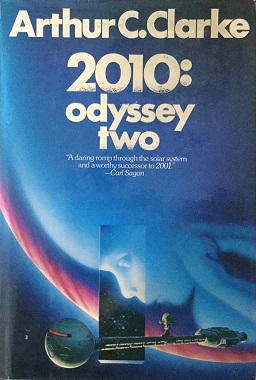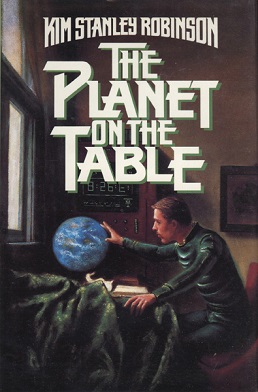
2010: Odyssey Two is a 1982 science fiction novel by British writer Arthur C. Clarke. It is the sequel to his 1968 novel 2001: A Space Odyssey, though Clarke changed some elements of the story to align with the film version of 2001.

The Memory of Whiteness is a science fiction novel written by Kim Stanley Robinson and published in September 1985.

Footfall is a 1985 science fiction novel by American writers Larry Niven and Jerry Pournelle. The book depicts the arrival of members of an alien species called the Fithp that have traveled to the Solar System from Alpha Centauri in a large spacecraft driven by a Bussard ramjet. Their intent is conquest of the planet Earth.

Sundiver is a 1980 science fiction novel by American writer David Brin. It is the first book of his first Uplift trilogy, followed by Startide Rising in 1983 and The Uplift War in 1987.

Demon Princes is a series of five science fiction novels by Jack Vance, which cumulatively relate the story of Kirth Gersen, a man trained by his grandfather to exact revenge on five notorious interstellar crime bosses, collectively known as the Demon Princes, who carried the people of his village off into slavery during his childhood. Each novel deals with his pursuit of one of the five Princes.

Majipoor Chronicles is a collection of ten stories by Robert Silverberg, published in 1982. The stories are all part of the Majipoor series.

Man of Two Worlds (1986) is a science fiction novel by American writers Brian and Frank Herbert.

The Doors of His Face, The Lamps of His Mouth, and Other Stories is a collection of science fiction short stories by American writer Roger Zelazny. It was published in 1971 by Doubleday.

A Bracewell probe is a hypothetical concept for an autonomous interstellar space probe dispatched for the express purpose of communication with one or more alien civilizations. It was proposed by Ronald N. Bracewell in a 1960 paper, as an alternative to interstellar radio communication between widely separated civilizations.

Tales of Pirx the Pilot is a science fiction stories collection by Polish author Stanisław Lem, about a spaceship pilot named Pirx.

Duncan Alasdair Lunan, born October 1945, is a Scottish author with emphasis on astronomy, spaceflight and science fiction, undertaking a wide range of writing and speaking on those and other topics as a researcher, tutor, critic, editor, lecturer and broadcaster. He is known for his science writings as well as for his work on the Sighthill stone circle.

The Sun Shines Bright is a collection of seventeen nonfiction science essays by American writer and scientist Isaac Asimov. It was the fifteenth of a series of books collecting essays from The Magazine of Fantasy and Science Fiction. It was first published by Doubleday & Company in 1981.

The Ragged Astronauts is a novel by Bob Shaw published in 1986 by Gollancz. It is the first book in the series Land and Overland. It won the BSFA Award for Best Novel.

The Planet on the Table is a collection of science fiction stories by American writer Kim Stanley Robinson, published in hardcover by Tor Books in 1986. A British paperback edition appeared in 1987, as well as a Tor paperback reprint; a French translation was issued in 1988. The collection was republished in the 1994 Tor omnibus Remaking History and Other Stories. The collection takes its title from a poem by Wallace Stevens, which provides the book's epigraph.

The Final Encyclopedia is a science fiction book by Gordon R. Dickson published in 1984. It is part of the Childe Cycle series. The Final Encyclopedia transitions from the militaristic action-adventure of the earlier books in the Childe Cycle to a philosophical commentary on the evolution of humankind.
Anatomy of Wonder — A Critical Guide to Science Fiction is a reference book by Neil Barron. It covers hundreds of works of science fiction.
Aurelia is a novel by R. A. Lafferty published in 1982.
On the Good Ship Enterprise: My 15 Years with Star Trek is a book written by Bjo Trimble.
Golden Witchbreed is a novel by Mary Gentle published in 1983.
The Science in Science Fiction is a book by David Langford, Peter Nicholls and Brian Stableford published in 1982. The book is divided into twelve chapters. The first eleven chapters each examine science fiction works about a particular topic, such as Space Flight, Aliens or Time Travel, and discuss how accurate the works are to real science; the final chapter of the book covers notable instances "where science fiction gets it wrong".















